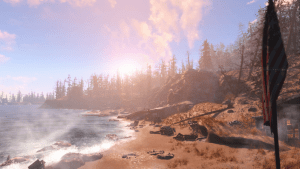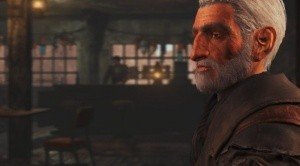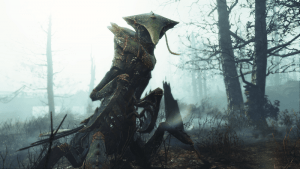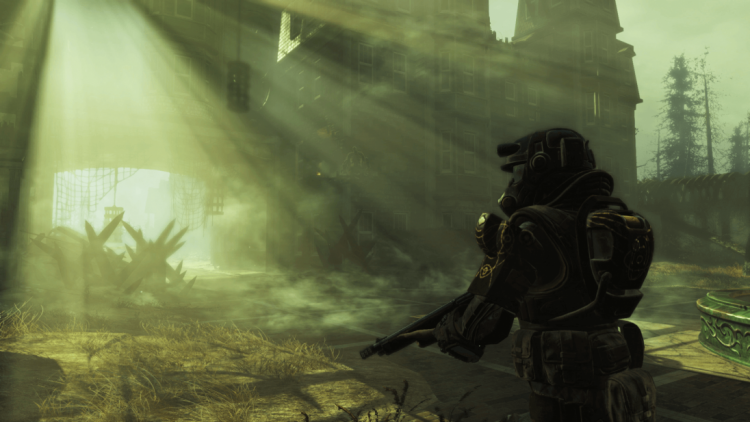Not long into Far Harbor, having just arrived on the docks of the titular island, I had a pretty interesting encounter with the natives. You see, throughout Fallout 4, I had been carrying a few syringes of a mad scientist’s serum that I had picked up in a side quest. While they did have some use to me, it was never anything that couldn’t have been handled without wasting such a rare item. Now I was staring at a man who lay dying, the local doctor not competent enough to save him. After a bit of dialogue, I was suddenly presented with the kind of prompt I’d not seen since New Vegas. Not only could I have performed a skill check and tried to manually operate on the man, but the game wonderfully tied itself back to the old material and offered the option to use the mysterious syringe. I’ll let you find out how the story (could have) ended.
Game Name: Far Harbor
Platform(s): PS4 (Reviewed), Xbox One, PC
Publisher(s): Bethesda Softworks
Developer(s): Bethesda Games Studios
Release Date: 5/19/16
Price: 25.00 USD
It’s experiences like this that make me love Far Harbor so much, to the point where I’d say its story and quest design exceed the base game in almost every way. In some ways, it might be unfair to make this assertion. After all, some of the fun is how the new expansion ties itself back to the vanilla game. But the majority of it is how superior the writing is to that found in the previous campaign, as well as Bethesda allowing the series’ RPG elements to matter again.

The tale begins with the player being summoned to Nick Valentine’s detective agency, where a new case has been made available. A man on the coast is seeking help in finding his missing daughter, and after a brief investigation it is pretty clear that she stole a boat and headed for the island of Far Harbor. It then becomes your job to pursue her to the island, where she is seeking out a Synth colony, and where the player will discover a larger conflict brewing. Similar to the first game, there are a few faction butting heads for both practical and philosophical reasons. The islanders have retreated to the Harbor, which has become the last safe haven against “The Fog”. The Synths are providing them with the means to hold off the radioactive Fog, but meanwhile the Children of Atom seek to see the Fog spread for ideological reasons. Again, there are some fairly big stakes at play. The difference this time is how personal the stories are.
Interactions with the various NPCs allow us to see how much the conflict matters on a personal level to these individuals. In Fallout 4, Desdemona was really nothing more than a quest giver for the Railroad. We knew nothing more than she smoked cigarettes and believed that Synths should be free. There was nothing behind it. Here, we learn a lot about faction leaders like the Harbor’s Avery, and their stories become integral to the main plot itself. This gives a lot more weight to the proceedings as opposed to before. Quests also allow the player to learn more about the history of each of the NPCs history with the island. There are also a lot of cool nuances to each of these characters and their worldviews. Early on, the player will have a discussion with the leader of the Synth colony, who dares to question your own character’s identity. After all, the player can only remember as far back as the bombs dropping.

The more character-driven story is complemented by something fans found lacking in the original campaign: freedom. There are more options given when approaching quests in Far Harbor. Sometimes they are minimal, sometimes the consequences are huge. The ways in which some quests affect others are even hidden from you at points, and when it is revealed it is done so to great effect. While the voiced protagonist still puts a damper on things at times, I still felt like I was more in control of how I was playing than before. It’s also nice to see Bethesda bringing back things like skill checks and giving the players reasons to put more focus on stats, even if they theoretically can max them all out simultaneously. At the end of the day, there is far more reason to revisit this story than the previous campaign, which really only differed between factions in the final hours. That all being said, I wouldn’t go into this expansion expecting the range of choices found in, say, New Vegas. It’s certainly an improvement, but keep expectations in check.
In terms of new “things”, Far Harbor does more than either of the preceding DLCs to give the player more toys. Moreover, those toys are more satisfying to play with. There is a new companion on the scene in the form of Longfellow. At times, he feels like a bit of wasted potential, as his cold demeanor is not at all unlike others already in the companion lineup. However, he is a much more fleshed out character than the AI companions seen in Automatron. Overall, he is a welcome addition to the lineup. Those who enjoyed settlements will be pleased to find, well, more settlements. But more interesting are the gear and weapons, not to mention the monsters you’ll slay them with. On top of a few new types of weapons and the awesome Assault Marine armor, the DLC feature a lot of unique items that actually are useful. The island’s bestiary is as much a character as any you encounter in the story. The designs behind them are so much more interesting than the worn ghouls and rabid dogs. Giant salamanders and Angler’s, anthropomorphic versions of the fish, are just a taste of what the Fog holds in store, making it easier to understand why the islanders fear it so. I can only hope Bethesda keeps introducing enemies like this in future DLCs, as they make for far tougher but also more interesting fights.

Speaking of the Fog, there is really only one major fault I can find in this expansion, and it is nothing new for either the franchise or Bethesda as a developer. Far Harbor has fairly obvious optimization issues, mostly related to volumetric fog and lighting effects. These issues have largely affected consoles, with the frame rate being cut in half during some of my adventures into the Fog. PC players have reported some issues as well. While not as devastating, the effects have taken their toll on even fairly powerful rigs. This is something that will probably be patched in the near future, but it is frustrating because this is not something one can just “miss” during QA sessions. The majority of the map is covered in the Fog, and so it can become frustrating when fast-moving enemies like ghouls become impossible to hit because of a technical issue. That all being said, the environments are beautiful, and I definitely felt more interested in exploring this wasteland as opposed to everything in the Commonwealth that wasn’t downtown Boston.
If you liked Fallout 4, you owe it to yourself to pick up Far Harbor because you will probably like it more. If you didn’t love the direction the series has been taking, perhaps Far Harbor will right some of those wrongs. Overall, this expansion does what a good expansion should do: provide more of what made the original good and continue or expand the story in a satisfying way. Far Harbor exceeds that by giving us a lot of content and providing a world and story that is more interesting than what came before it, as well as bringing back series’ staples that some felt were missing from the original.
-
Pros
- Fantastic, character-driven story
- Far Harbor is a well-realized locale
- Skill checks and player choice make somewhat of a comeback
- Might be time for a new engine, Bethesda
- That voiced protagonist is still a bummer
-
Cons
-
The Empire if Fallout 4 was A New Hope


